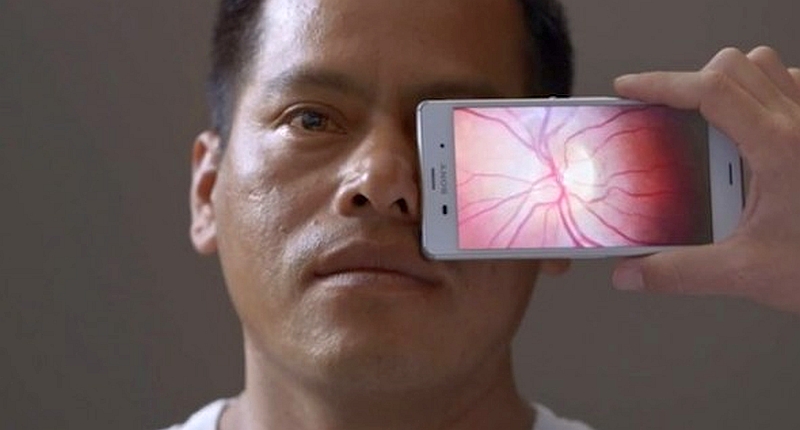Just when you thought the features and apps available to smartphones have reached their creative peak, a group of engineers, researchers, and software developers come out of nowhere to surprise us again.
A recently launched IndieGoGo campaign is hoping to raise money for a revolutionary camera app and attachment combo that turns an ordinary smartphone into a portable eye examination device.
No ad to show here.
Peek Retina is the official name of the endeavor, and is the result of a collaborative effort among eye doctors, engineers and software developers. Peek Retina is a clip-on camera adapter that combines “a traditional ophthalmoscope and a retinal camera in a mobile phone.”
The camera attachment and an accompanying downloadable app allows your smartphone to take detailed images of the back of your eye and retina. Studies conducted by the developers of the attachment and app show that healthcare workers using Peek can conduct over 1000 eye exams per week.
Given the high rate of preventable cases of blindness around the world, Peek Retina empowers healthcare workers in impoverished areas to provide convenient and affordable eye exams to patients who otherwise do not have the means or access to seek out conventional medical attention.
The individuals pioneering the technology behind Peek Retina have forged partnerships with Médecins Sans Frontières and the International Agency for the Prevention of Blindness. Helping non-profit organizations and health care collectives diagnose cataracts, glaucoma and other eye related diseases early is an important part of Peek Retina’s mission statement.
The following YouTube video features TED Fellow Andrew Bastawrous discussing the technology and potential of Peek:
It is estimated that approximately 39-million people suffer from blindness. Sadly, 80% of these cases of blindness could have been prevented if only the sufferers had received the eye care they needed when the afflicting disease was in its early stages of development.
So far, Peek Retina has raised 50% of its £70 000 (US$11 000) goal.
Article originally published on TechGenMag
